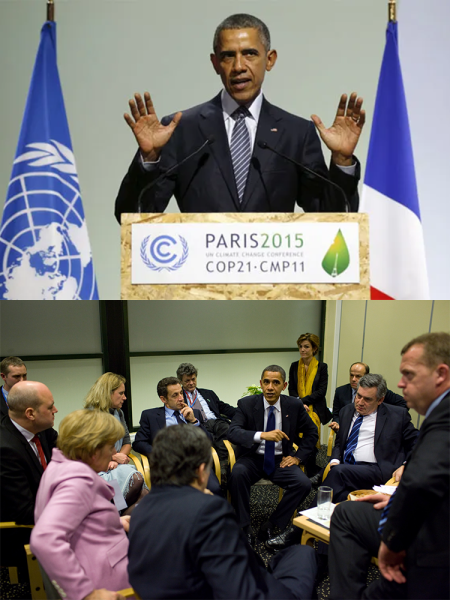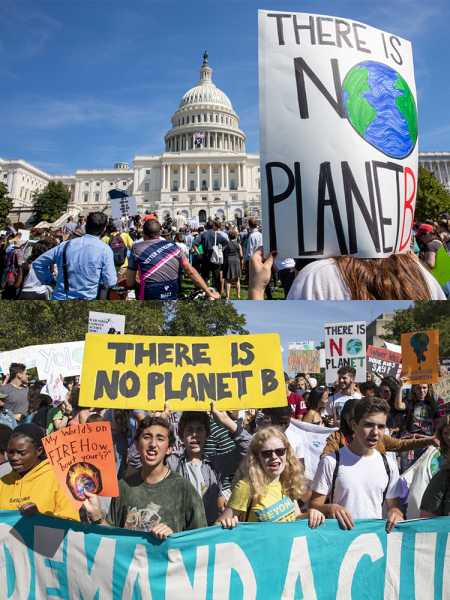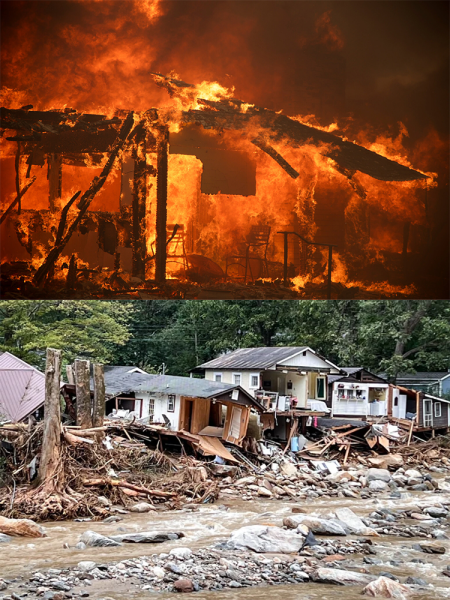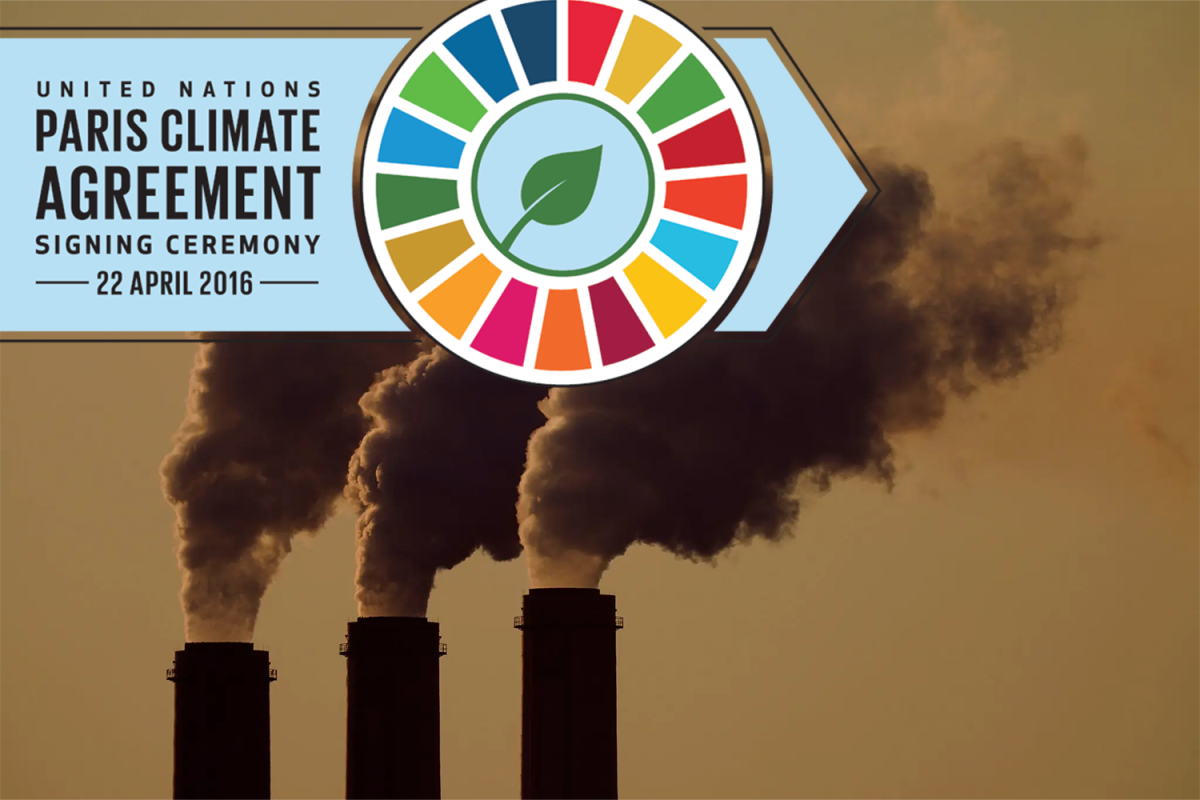In 2015, 196 countries signed the Paris Agreement, a legally binding international treaty designed to help combat climate change, according to unfccc.int. The pact aims to reduce global greenhouse gas emissions in order to limit the international temperature increase to two degrees with the ultimate goal of limiting the increase to one and a half degrees each year. Moreover, the agreement assists developing countries in global warming mitigation as a way to reduce total global temperatures. The only countries not a part of the pact are Yemen, Libya, Iran, and now, with the new administration’s policy, the United States (US). Over the last ten years, with each new presidential administration, the US has shifted its stance on remaining a part of the treaty, according to nrdc.org. Alarmingly, 2024 was the hottest year on record, according to nasa.gov. Although renewable resources are more expensive and could potentially hurt the US economy, global temperatures are rising exponentially every year, posing a more dire threat to society. This distressing trend means that the more time that goes by without switching to cleaner energy resources, the more expensive it becomes to switch to a greener solution. Thus, I implore government officials to stay in the Paris Agreement. Indeed, there will be no economies, no countries, no nature, no living creatures, and no Earth without US involvement in the global climate solution.

Former President Barack Obama entered the Paris Agreement in 2015, along with 195 other nations. The treaty called for no new legal obligations as Congress had already passed a piece of legislation to cut carbon pollution. Interestingly, the agreement could not formally take place until 55 nations who represented 55 percent of global emissions joined. This finally took hold October 5, 2016. However, when President Donald John Trump took office in 2017, he withdrew the US from the treaty, according to according to time.com. As a result, when former President Joseph Robinette Biden became president in 2021, he re-entered the treaty, according to nrdc.org. Again, when Mr. Trump took office for his second non-consecutive term, January 21, 2025, the administration withdrew from this international agreement, according to time.com. The discontinuity of US involvement in the global climate solution is not only detrimental but, in fact, causes stagnation. Truly, the political climate in the US has brought the phrase “two steps forward, three steps back” into relevance amidst the climate crisis.
Ms. Alyson Tockstein, Upper School Science Teacher, discussed why US involvement in the Paris Agreement is essential for a decrease in rising temperatures. She reflected on how global warming is an international issue, and therefore, the only practical way forward is to cooperate with other nations.
“[The treaty] is impactful because the global average temperature is not a one country problem,” Ms. Tockstein said. “It is a global problem. What we do here in the United States affects the world, what Russia does affects the world, and what China does affects the world. So, we have to look at climate change as an international problem. […] International cooperation in this case is not only necessary, it is going to be the only way forward.”
Although the previous stretch of the US’s withdrawal from the treaty was only four months, it had profound effects on international policy. In fact, the US’s exit hurt many small, developing countries, who relied on the US for support in the transition to cleaner policies. Moreover, the US’s withdrawal hindered foreign diplomacy. The departure also tarnished global credibility and, ultimately, created a reputation of unpredictability for the US as other nations saw this action as a flee from global leadership amidst a time of crisis, according to time.com. Simply, other nations now no longer trust the US to be a full partner in forging the way for a global climate solution.

For Mr. Trump’s second term, January 21, he gave the United Nations (UN) formal notice the US would leave the treaty. However, the process of exiting will take a full year, as there are many restrictions and protocols in place for when a country leaves the accord, according to npr.org. As a result, the US will likely remain out of the agreement for at least three years. Undoubtedly, the effects will be even more catastrophic than they were four years ago. Foremost, it will be calamitous because the US will not be in the Paris Climate Accord for an indefinite amount of time. In addition, it will be cataclysmic because the global temperatures are higher than they were when the US first withdrew in 2020 since, as aforementioned, 2024 was the hottest year on record. Ms. Tockstein commented on why it is crucial for the US to remain in the Paris Climate Accord.
“I think that long-term continuity is really important in order to actually make a difference,” Ms. Tockstein said. “If we keep switching every four years, then what’s done in four years is then reversed in the next four years.”
Thankfully, January 23, businessman and former Mayor of New York City, Michael Rubens Bloomberg announced that his philanthropic organization would pay the US’s financial obligations under the Paris agreement to the United Nations Framework Conventions on Climate Change (UNFCCC). Usually, the US pays about one fifth of the total UNFCCC bill. Mr. Bloomberg did not specify how much his organization would contribute over the next four years. However, he donated roughly 15 million dollars to UNFCCC in the last US withdrawal from the Paris Agreement between 2017 and 2020, according to thehill.com. While future generations are forever in Mr. Bloomberg’s debt for his profound contributions to ending global warming, his noble act does not resolve the international crisis of withdrawing from the accord. In fact, currently there is no longer an international obligation that requires the US to cut carbon emissions. Ultimately, the generosity of one man will not solve the climate crisis. Rather, it is up to nations to work together to solve this global issue.
The US contributes immensely to global greenhouse gas emissions. In fact, the US is producing more natural gas, fossil fuels, and oil than ever in the nation’s history. Mr. Trump intends to increase this production rampantly, according to The New York Times. While nonrenewable resources are currently cheaper and could potentially boost the US economy, their “benefits” come at a deadly cost. Government officials must think about the future. There will be no economy if the earth is too hot to inhabit. The transition will be too costly if the US does not begin to change its energy production immediately.

With increased greenhouse gas emissions and rising global temperatures comes a multitude of climate disasters. For example, the historic fires in Los Angeles, California, which are ongoing, are a result of global warming, according to npr.org. Due to extreme weather “whiplash,” the shrubbery in Southern California became vulnerable to the record-breaking heat, which allowed for combustion, according to latimes.com. Additionally, now that fire season is overlapping with the Santa Ana wind season, the flames could spread through the streets of Los Angeles without restraint, according to npr.org. Subsequently, global warming also intensified the deadly hurricanes, which hit neighborhoods from Florida all the way up to North Carolina, in 2024, according to npr.org. Rising temperatures increase ocean temperature as well, causing more frequent hurricanes, typhoons, and clones across the globe. Warmer waters also creates stronger wind speeds, more rainfall, and heavier coastal flooding, according to bbc.com. These weather catastrophes will only intensify unless government officials do something to combat the increasing temperatures. While the Paris Agreement is not a solution to all environmental issues, it does allow for a unionized effort to mitigate the escalating effects of climate change. The US, too, must play its part in stopping this global calamity.
Ultimately, climate change is an issue with nuance and involves international action in order to be fully combatted. Although the Paris Agreement does not offer a full solution to the global climate crisis, it does help progress nations forward toward a unified front. Because the economy is an important factor to many Americans, it is crucial that the government take action toward reforming greenhouse gas emissions now, so that the effects will be less detrimental. Hence, the US must stay in the Paris Climate Accord to make lasting change, help other sovereign nations meet their emission targets, and progress the world toward a cleaner and greener future.
Featured Image by Emily Shull ’25




